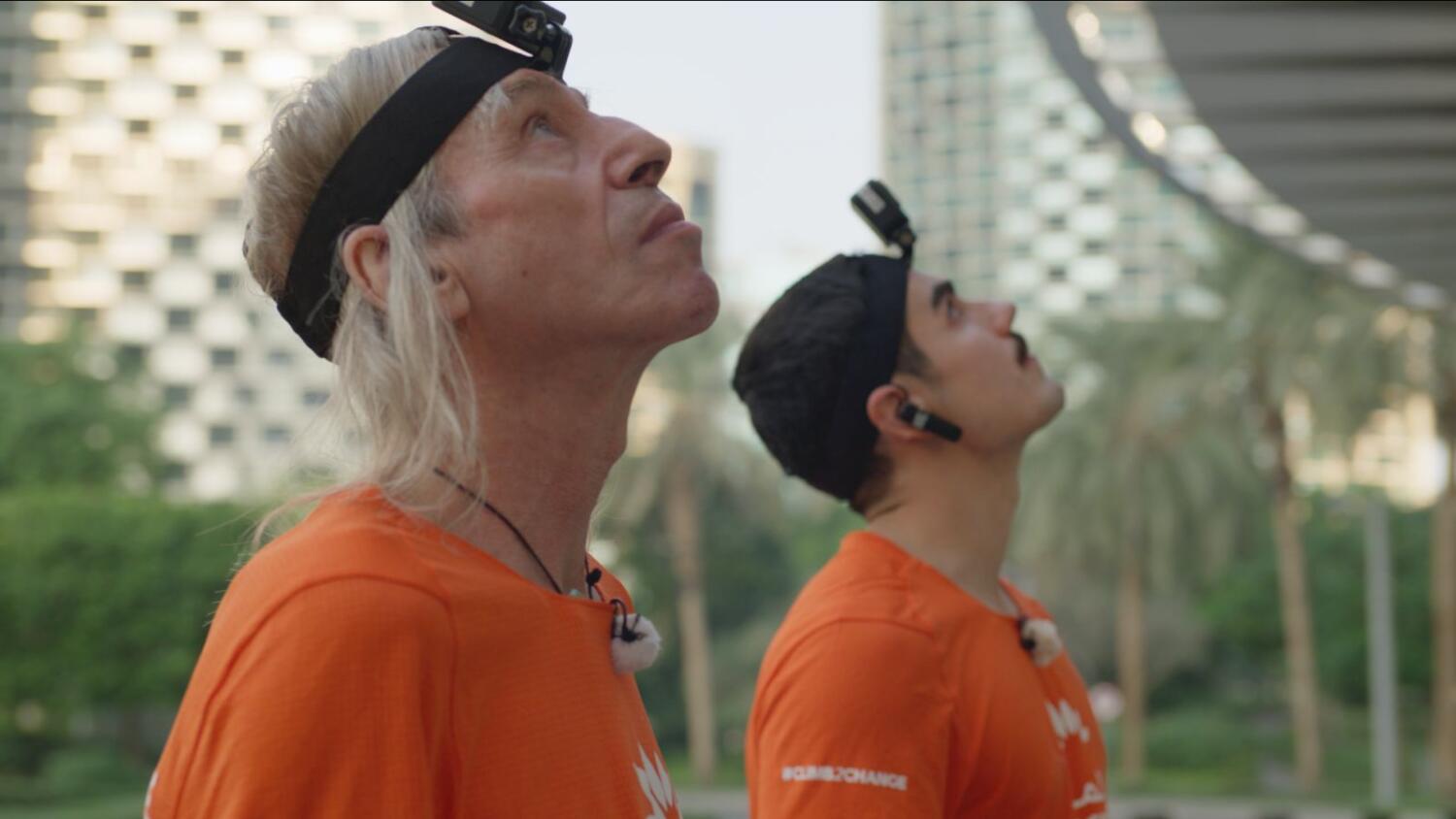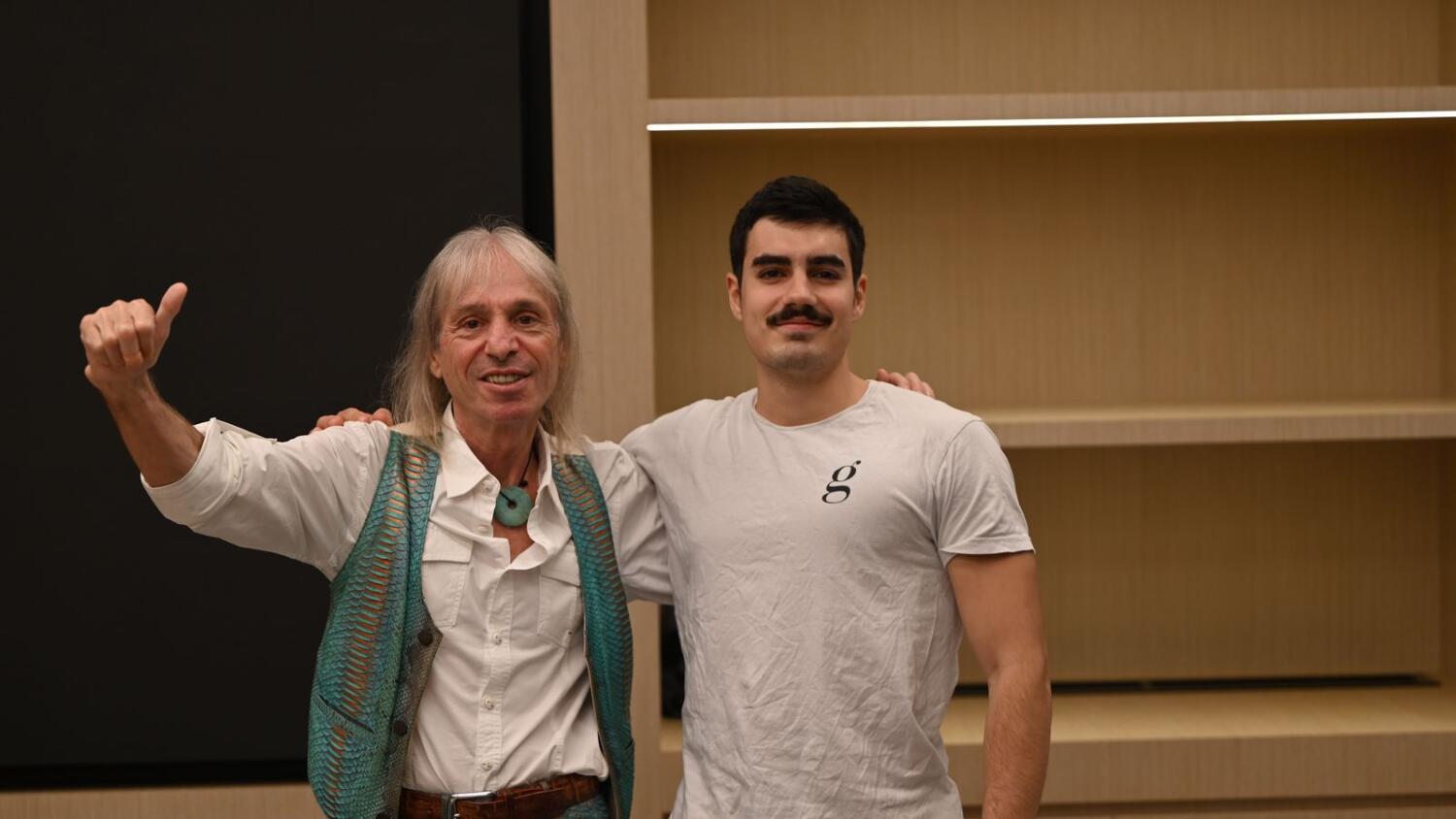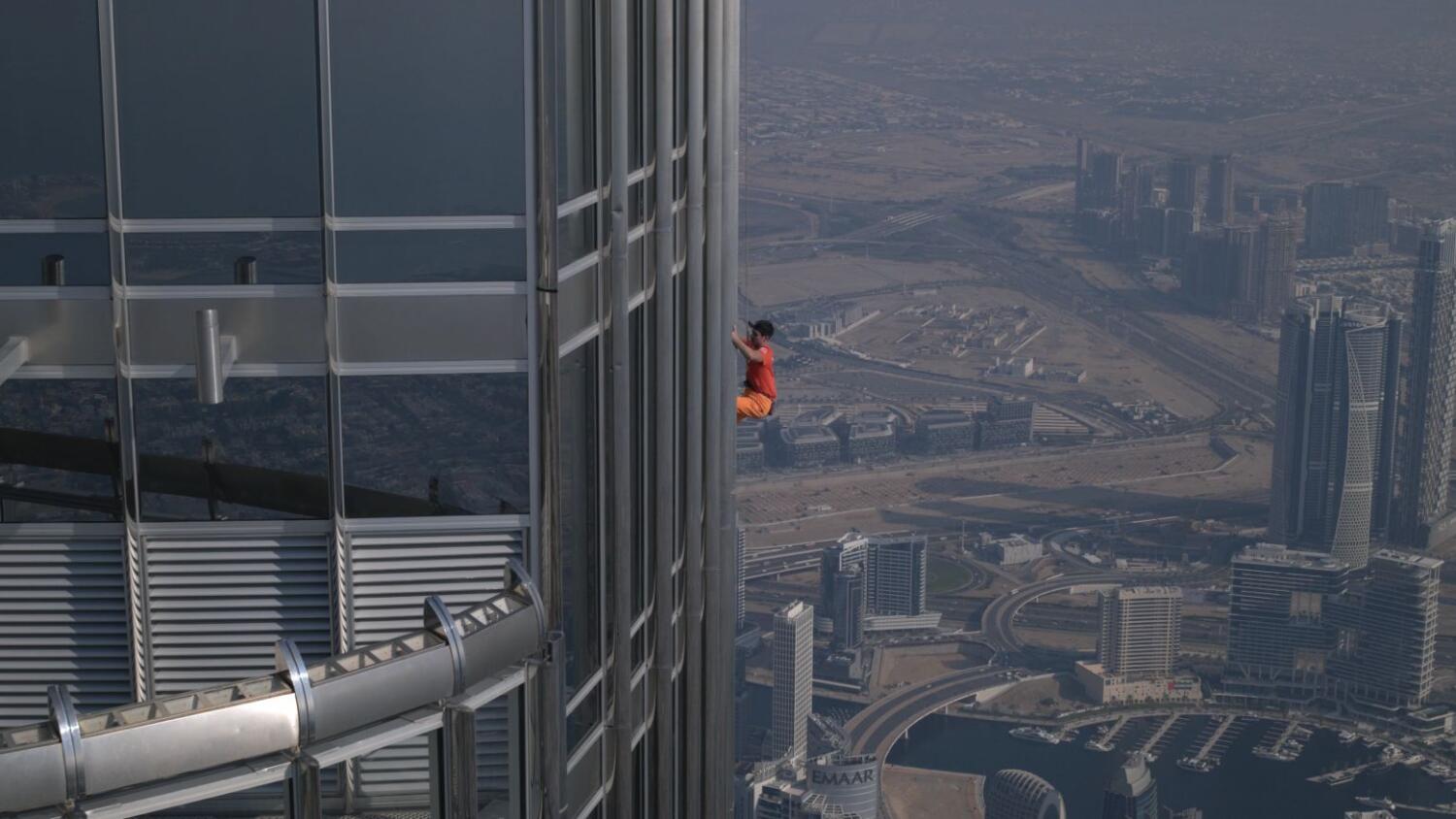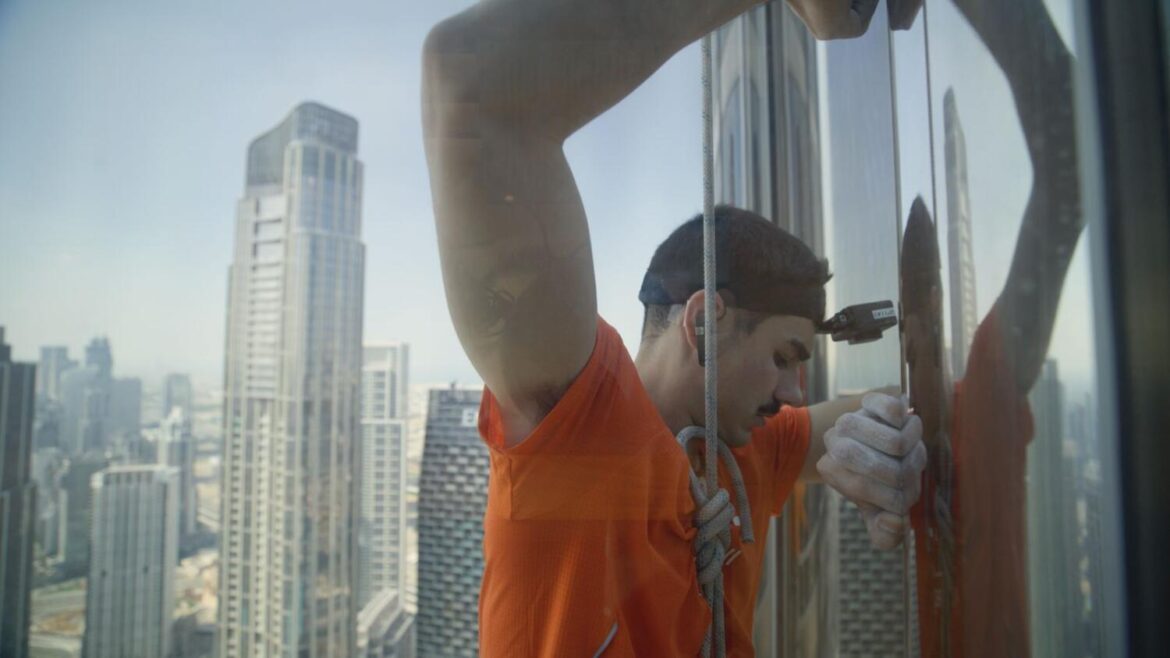In a breathtaking feat, renowned climbers Alain Robert, famously known as the French Spider-Man, and Alexis Landot, scaled the iconic Burj Khalifa in Dubai, a thrilling adventure that commenced as part of Mashreq’s ‘Climb2Change’ global initiative.
For Alain Roberts, the climb marked a remarkable return at the age of 61, a feat he hadn’t anticipated after climbing the world’s tallest building for the first time over a decade ago. “Personally, I was really happy; it was the second time,” he said in a chat with City Times a day after the climb which took place on November 20. “I didn’t know one day that at 61 I would be able to climb Burj Khalifa again.”
Climbing alongside the younger generation represented by Alexis, Alain felt a sense of honour and appreciation for the evolving spirit of climbers pushing boundaries.

Feelings were mutual between the two, more so for Alexis as he got the chance to climb together with his ‘childhood inspiration.’ “For me, it’s the first time, and I’m so happy I had the opportunity to do this with Robert,” said Alexis. “I was dreaming of doing something like this ever since I was a little kid, inspired by him.”
Both Alain and Alexis are classic climbers with a background in climbing on rocks, with their preparation for such extreme climbs involving classic climbing training. Alain, with an old-school approach, and Alexis, with a modern touch, blend their methods with athleticism which ultimately allows them to scale up such urban heights, while obviously considering every nuance of the building they intend to conquer.
“We undergo classic climbing training as athletes, and urban planning becomes a result of that training. It involves both physical training and specific techniques for each climb,” said Alexis, with Alain adding how the training involves both physical endurance and mental preparation.
For free solo climbs, where no ropes are involved, the mental aspect is crucial. Alexis elaborated on the dual states of mind during the climb – a relaxed, meditative state and hyper-focused intensity.
“I divide my brain,” said Alexis. “Half of the time, I’m relaxed, almost meditating, and half the time, I’m in a hyper-focused mode”

Climbing free solo requires constant attention to every detail, as every sensation you feel is intensified, and a small mistake could be crucial. Describing the intense moments during a climb, Alexis explained how heightened sensations, from the slightest drop of sweat to burning forearms, create a surreal experience. Every climb becomes a dance with death, where the climbers stare into the abyss, acutely aware of the consequences of any misstep.
Time for Alexis seemingly stretches during a climb, he said, with a second or two feeling like 1000s. “It feels like you could write an entire book about those two seconds of your life, which is nothing, but at the end of the day, it is enormous,” said Alexis.
Despite decades of experience, each climb brings a unique set of emotions. Alain, having faced the possibility of falling numerous times, sees each successful ascent as a rebirth. “At the top, many times, because I’ve been so close to falling and dying, I feel like I am born again,” said Alain. “Climbing for 50 years allows me to reborn on a regular basis.”
And Alexis agreed to having a similar feeling, but of course, he doesn’t recommend anyone to do what he does. “It’s a high risk sport. And the consequences of falling of course, is the end of your life,” he said. “But we risk our life every day without realising it. So the real danger in our life is when we actually go really close to death, but without realising that we’re getting that close. And when we free solo, we keep staring at death in the eyes. So even though we’re taking risks, we always measure everything we do, and we always exactly know in what position we are. And that’s what makes us stay, or feel, alive.”

Essentials for these extreme climbs are surprisingly minimal – climbing shoes, chalk, and sometimes straps. For both climbers, readiness depends on a combination of mental and physical preparation, with Alain relying on his 50 years of free soloing experience.
The Burj Khalifa climb was part of Mashreq’s ‘Climb2Change’ initiative, emphasising sustainability. Alexis expressed hope that their climb sends a powerful message, symbolising the union of generations to combat climate change.
Alain highlighted the urgency of shifting to renewable energies and offering hope for future generations. “It’s about giving hope,” he said. “Over the last 50 years, we’ve seen the planet deteriorate, and initiatives like COP28 are aiming to shift towards renewable energies. We want to send a message and offer hope.”
As for what’s next, both climbers hinted at future climbs in France and Germany, expressing a desire to revisit Dubai’s architectural marvels. With their indomitable spirit, Alain Robert and Alexis Landot continue to redefine the limits of human achievement, leaving an indelible mark on the world of extreme climbing.
“Depending on demands, I might climb something else,” Alain concluded. “I live in Bali now, so there isn’t much to climb, but I still love climbing on rocks.”


